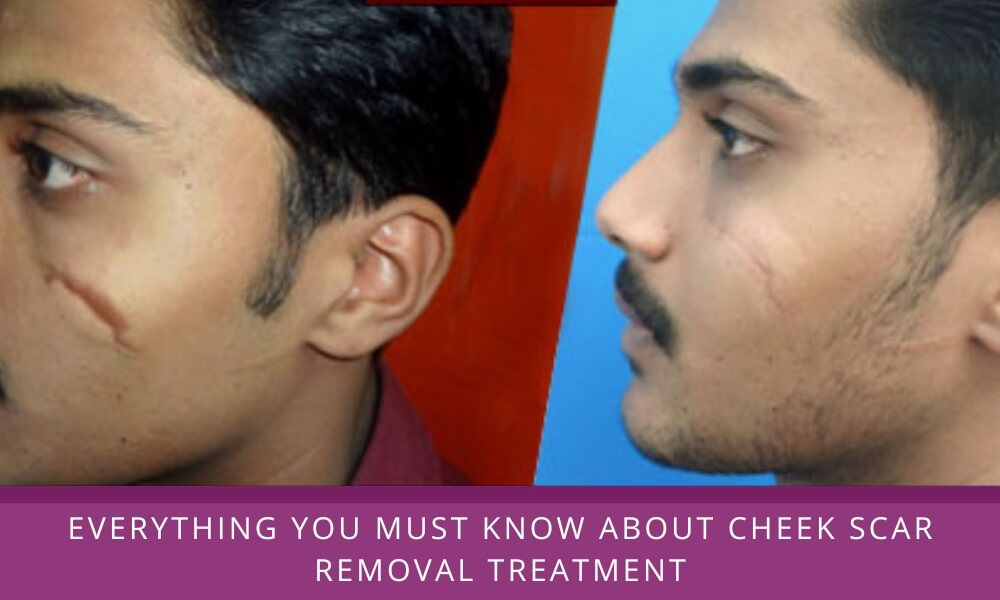Everything you must know about Cheek Scar Removal Treatment
Facial scars, especially on the cheeks, can be a source of distress for many individuals, impacting their self-esteem and confidence. Fortunately, advancements in medical technology have led to various effective methods for cheek scar removal, offering hope to those seeking to improve the appearance of their skin. This article explores the different approaches available for cheek scar removal, highlighting the procedures, risks, benefits, and tips for finding a reputable facial scar removal surgeon in India.
Types of Scars
Cheek scars can result from various causes, including acne, accident, injury, or burns. Some burns are atrophic, some hypertrophic, and others keloid. Cheek scar removal treatment depends on various factors, including the type of scar, the patient’s condition and age, and the patient’s overall health.
Treatment Includes Non-Surgical And Surgical Options
Non-Surgical Treatments
Topical Creams and Gels: Over-the-counter or prescription creams containing ingredients like silicone, vitamin E, or corticosteroids may help improve the appearance of mild scars. While these treatments are non-invasive, they may take several months of consistent application to show noticeable results.
Chemical Peels: A chemical solution is applied to the skin, causing it to peel and reveal a fresh layer underneath. This procedure can reduce the appearance of certain types of superficial scars, but it may not be as effective for deeper scars.
Microneedling: Microneedles create controlled micro-injuries in the skin, promoting collagen production and skin rejuvenation. Microneedling can help improve the texture of scars, making them less noticeable.
Minimally-Invasive Procedures
Laser Therapy: Laser treatments, such as fractional laser therapy, can target specific areas of the scar tissue, stimulating collagen production and helping to fade the scar over time. Laser therapy is generally safe and effective for various scar types but may require multiple sessions.
Dermal Fillers: For atrophic scars, dermal fillers can be injected beneath the scarred area to elevate it to the level of the surrounding skin, providing a smoother appearance. The results are temporary, lasting several months to a year, depending on the filler.
Surgical Procedures
Subcision: T procedure involves breaking the fibrous tissues beneath the scar, allowing the skin to lift and fill the depression. Subcision is particularly effective for rolling acne scars and other atrophic scars.
Scar Revision Surgery: In some cases, surgical excision and closure of the scar may be necessary for more significant and disfiguring scars. The surgeon will carefully remove the scar tissue and use advanced closure techniques to minimize scarring during the healing process.
Considerations and Risks
Before undergoing any cheek scar removal procedure, it’s essential to consult a qualified surgeon to determine the most suitable treatment option. While most procedures have a relatively low risk of complications, potential side effects may include infection, scarring, pigmentation changes, or allergic reactions to certain treatments. Cheek scar removal methods have come a long way in providing effective solutions for individuals looking to improve their facial appearance and self-confidence. From non-surgical treatments to minimally-invasive procedures and surgical interventions, plenty of options are available to address various types of cheek scars. Nevertheless, it is crucial to have realistic expectations and consider each method’s potential risks and benefits. Seeking advice from a qualified medical professional will help determine the most appropriate treatment plan for achieving the desired results in scar removal.

